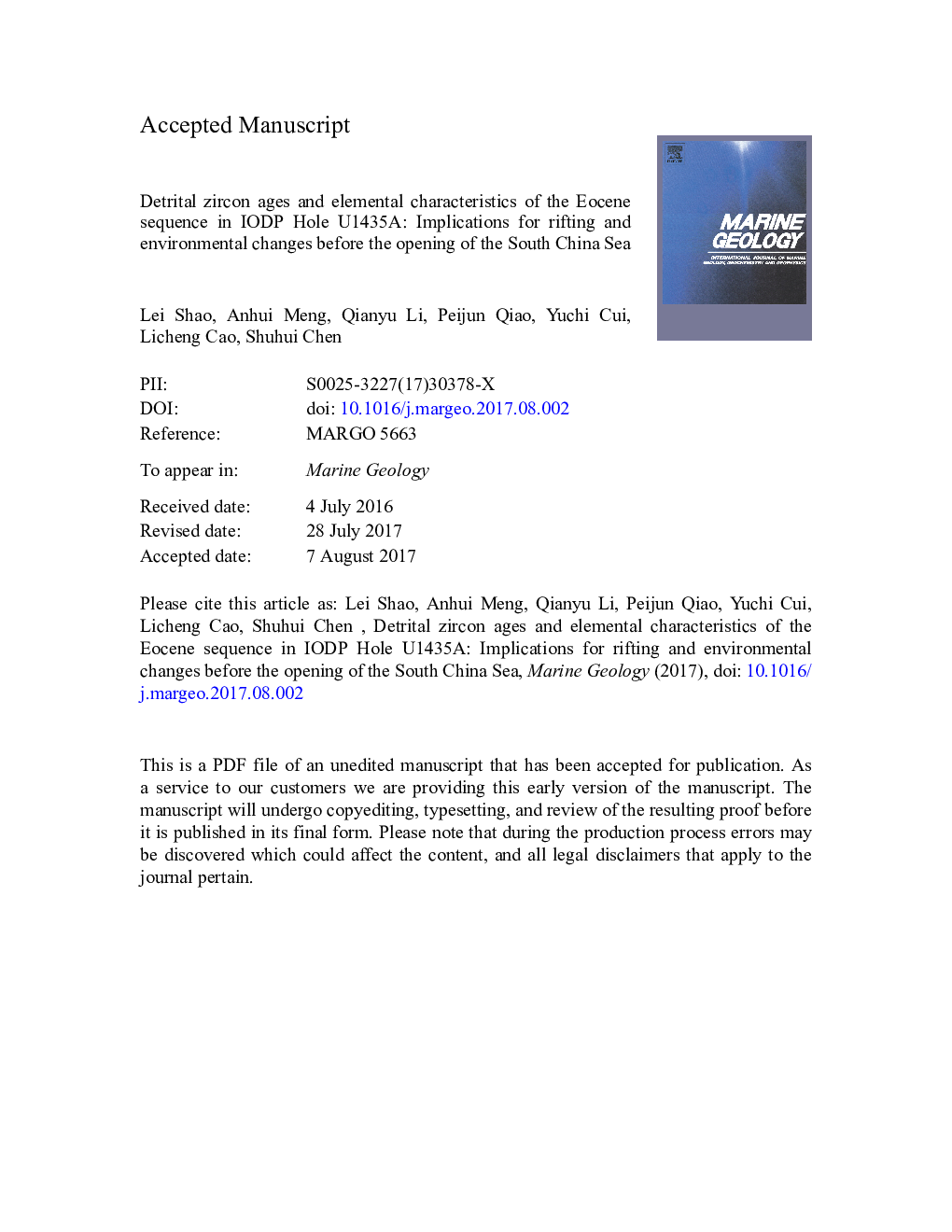| Article ID | Journal | Published Year | Pages | File Type |
|---|---|---|---|---|
| 8912066 | Marine Geology | 2017 | 41 Pages |
Abstract
The pre-Oligocene sediment succession including shipboard lithological Units II (77.65-275.54Â mbsf) and III (275.54-300Â mbsf) from International Ocean Discovery Program (IODP) Hole U1435A in the northern South China Sea is characterized by greenish to dark gray sandstone and siltstone of coastal marine facies with age previously undetermined due to a lack of age-diagnostic fossils. Detrital zircon UPb ages (9 samples) and thin sections (76 samples) from these two units, together with geochemical elements (197 samples) from Units I to III were analyzed to distinguish provenance, tectonic setting, and depositional age and environment. Petrographic study reveals that most samples are fine sandstones, mainly composed of subangular quartz (70-80%) and alkaline feldspar (10-15%; mostly K-feldspar), indicating a near proximal provenance. Discrimination diagrams, element ratios and chondrite-normalized rare earth element patterns suggest a relatively stable source of felsic rocks. Detrital zircon UPb dating results reveal a dominance of Mesozoic ages with a pronounced Early Cretaceous peak at ~Â 110Â Ma. Fourteen zircon grains from 7 samples yield much younger ages between ~Â 65 and 38Â Ma, indicating middle to late Eocene deposition, broadly corresponding to the lacustrine-shallow neritic Enping-Wenchang Formations of the Pearl River Mouth Basin. Comparison among various elemental proxies from the Eocene sediments in Hole U1435A and in offshore industrial wells confirms a continental island arc setting in the Cretaceous when the zircons were produced. In the middle and late Eocene, these Cretaceous igneous rocks were likely the source of the sediment deposited in a coastal marine environment. The relatively minor variations in elemental distribution and the concentration of Paleogene zircons (~Â 50-38Â Ma) further imply a consistent supply of weathered material from this magmatic landmass during an active rifting period before the opening of the South China Sea.
Related Topics
Physical Sciences and Engineering
Earth and Planetary Sciences
Geochemistry and Petrology
Authors
Lei Shao, Anhui Meng, Qianyu Li, Peijun Qiao, Yuchi Cui, Licheng Cao, Shuhui Chen,
